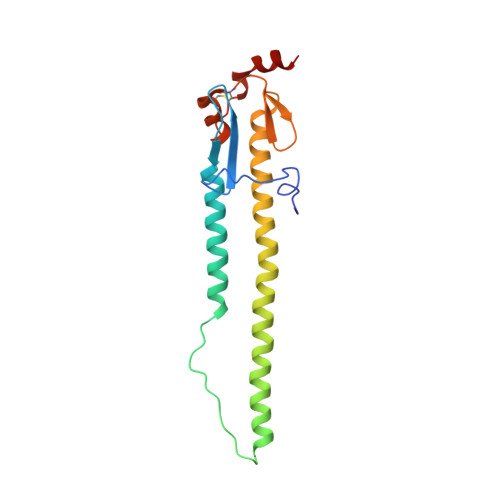Molecular basis of the receptor binding specificity switch of the hemagglutinins from both the 1918 and 2009 pandemic influenza A viruses by a D225G substitution
Zhang, W., Shi, Y., Qi, J., Gao, F., Li, Q., Fan, Z., Yan, J., Gao, G.F.(2013) J Virol 87: 5949-5958
- PubMed: 23514882
- DOI: https://doi.org/10.1128/JVI.00545-13
- Primary Citation of Related Structures:
4JTV, 4JTX, 4JU0, 4JUG, 4JUH, 4JUJ - PubMed Abstract:
Influenza A virus uses sialic acids as cell entry receptors, and there are two main receptor forms, α2,6 linkage or α2,3 linkage to galactose, that determine virus host ranges (mammalian or avian). The receptor binding hemagglutinins (HAs) of both 1918 and 2009 pandemic H1N1 (18H1 and 09H1, respectively) influenza A viruses preferentially bind to the human α2,6 linkage receptor. A single D225G mutation in both H1s switches receptor binding specificity from α2,6 linkage binding to dual receptor binding. However, the molecular basis for this specificity switch is not fully understood. Here, we show via H1-ligand complex structures that the D225G substitution results in a loss of a salt bridge between amino acids D225 and K222, enabling the key residue Q226 to interact with the avian receptor, thereby obtaining dual receptor binding. This is further confirmed by a D225E mutant that retains human receptor binding specificity with the salt bridge intact.
Organizational Affiliation:
CAS Key Laboratory of Pathogenic Microbiology and Immunology, Institute of Microbiology, Chinese Academy of Sciences, Beijing, China.


















